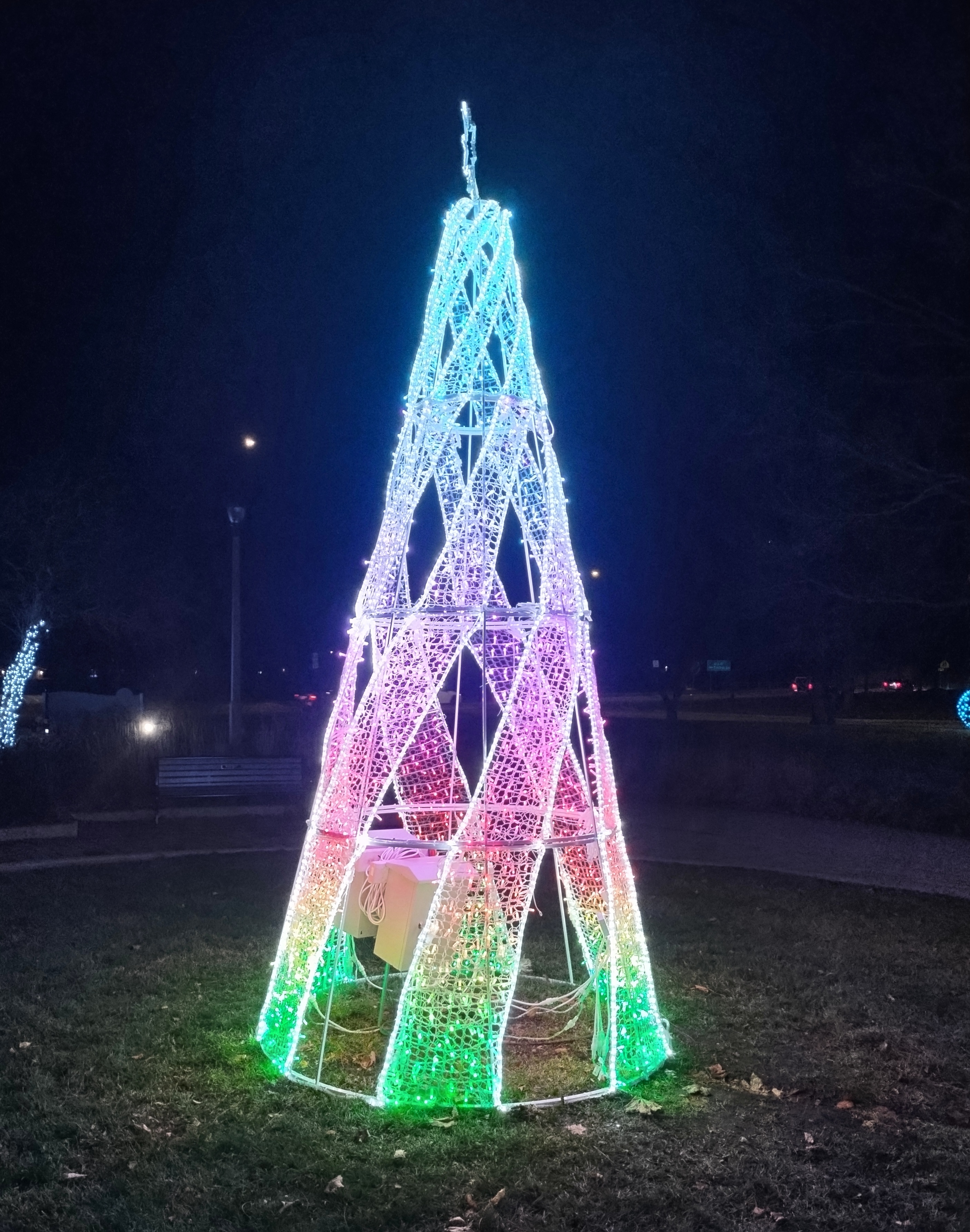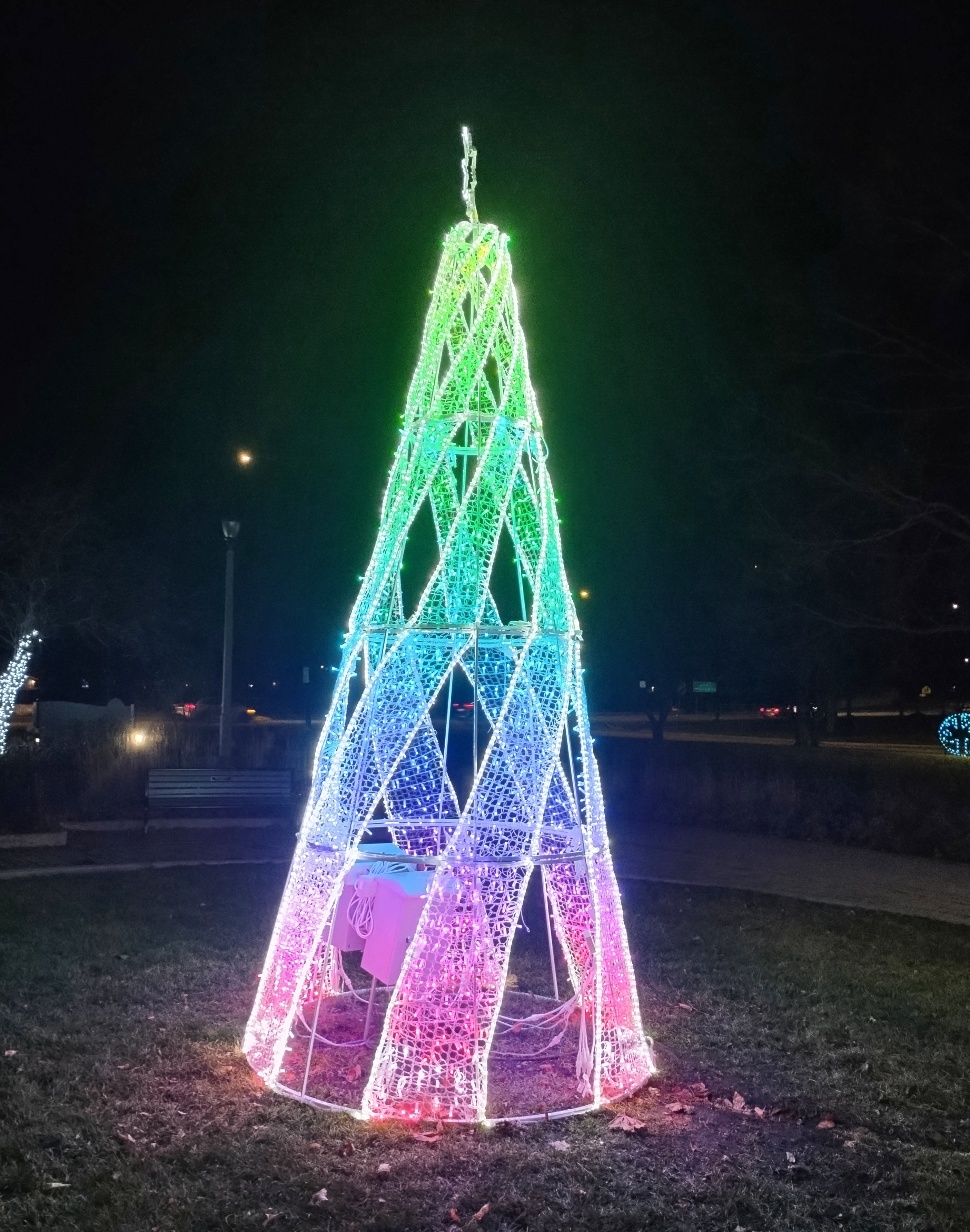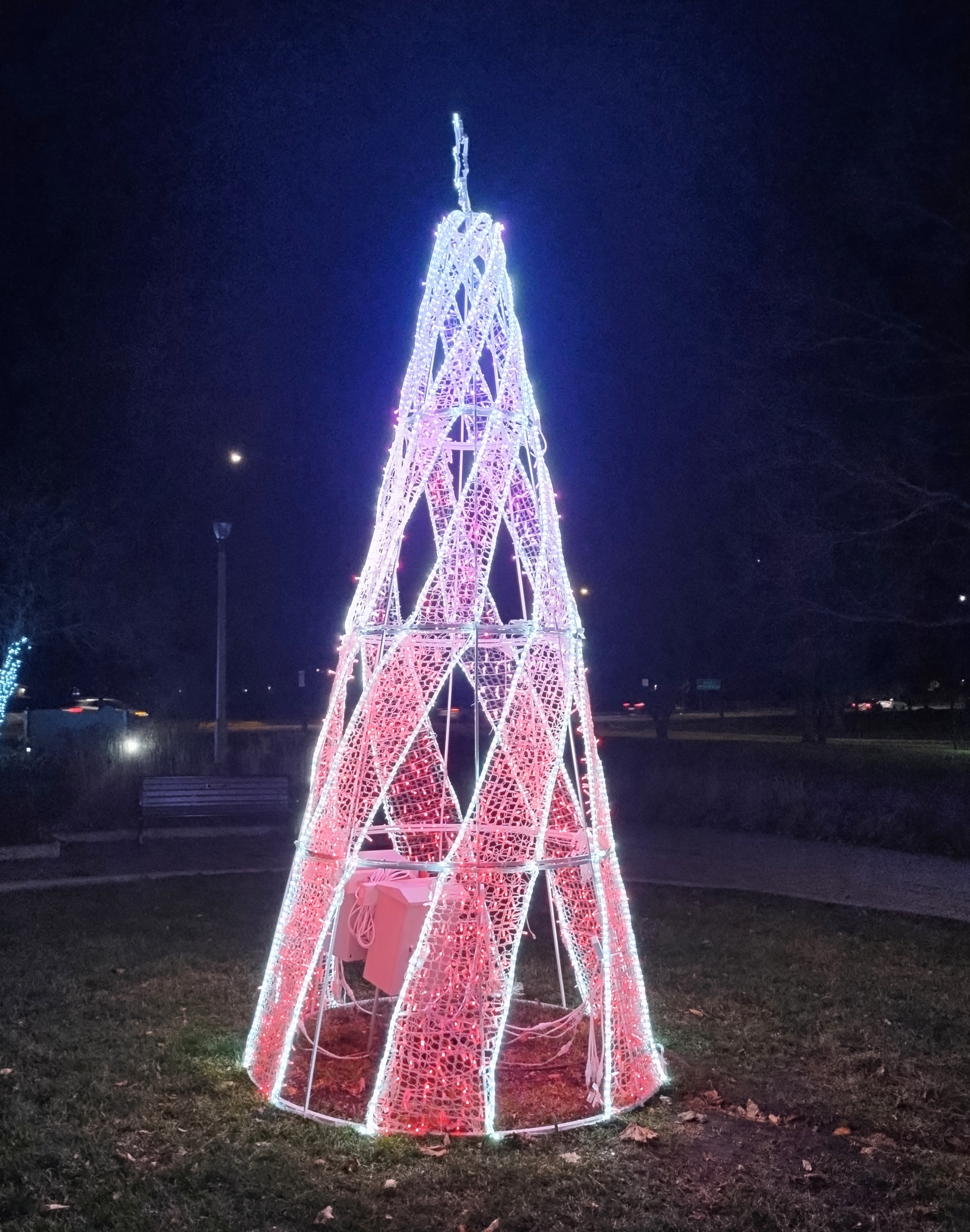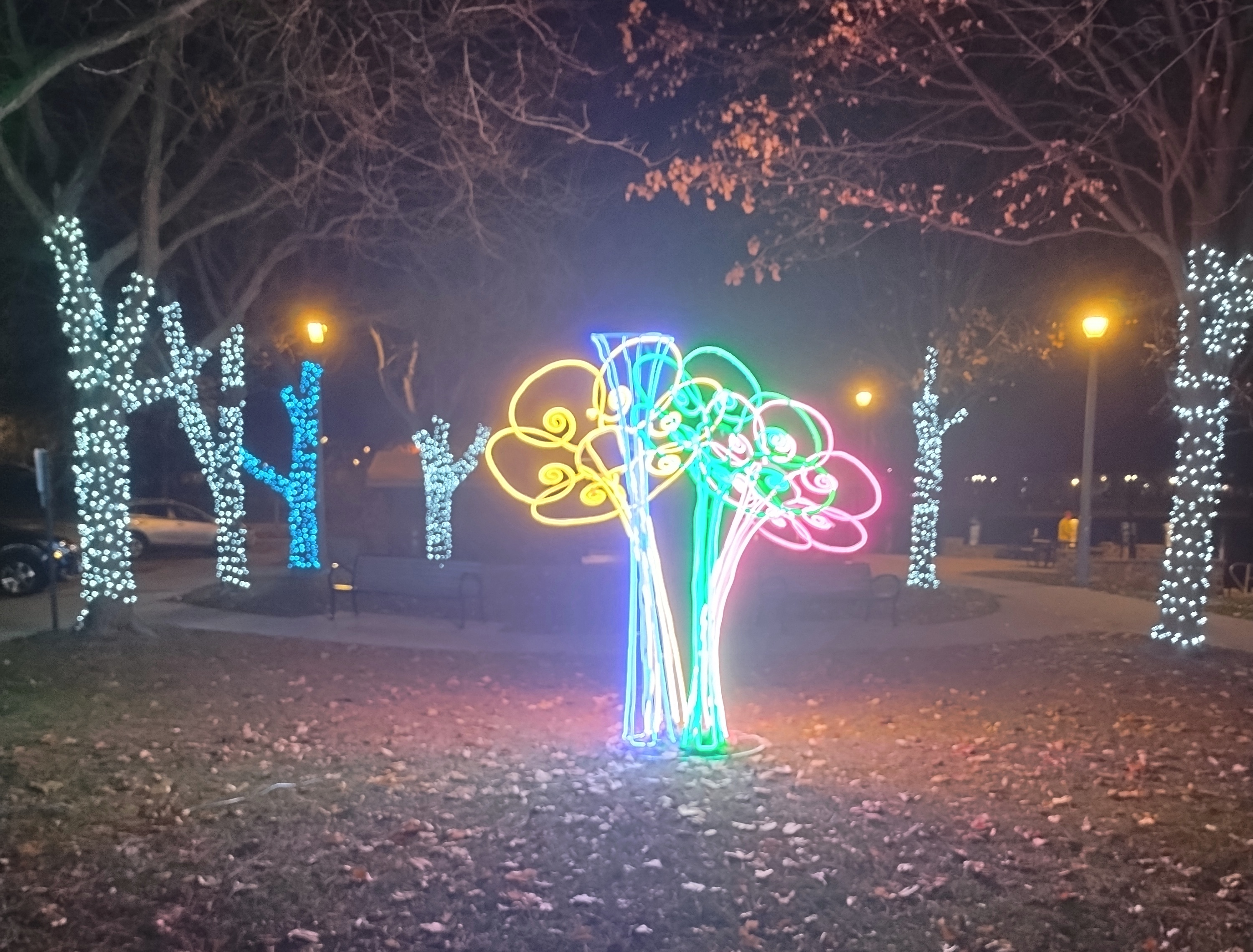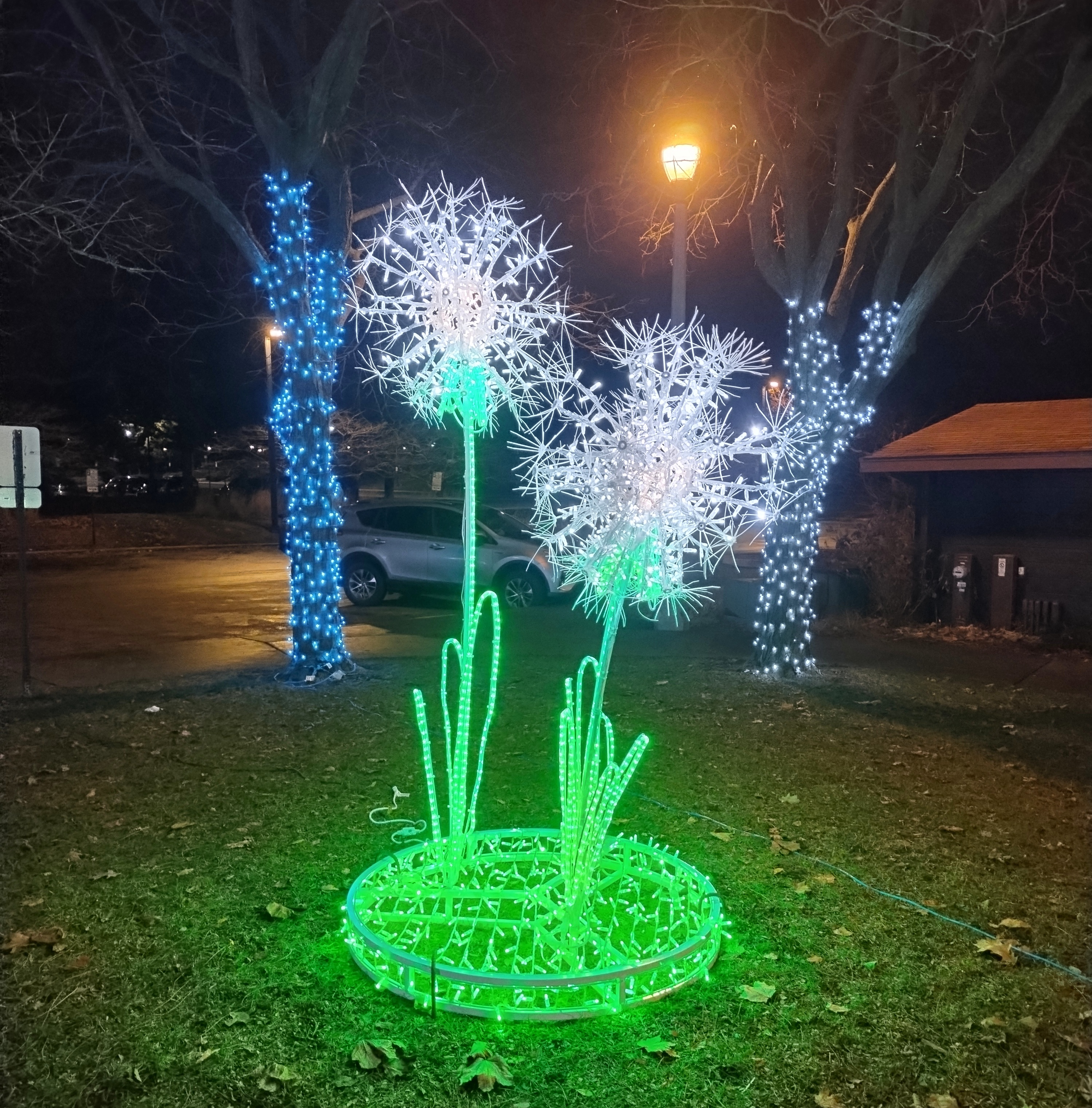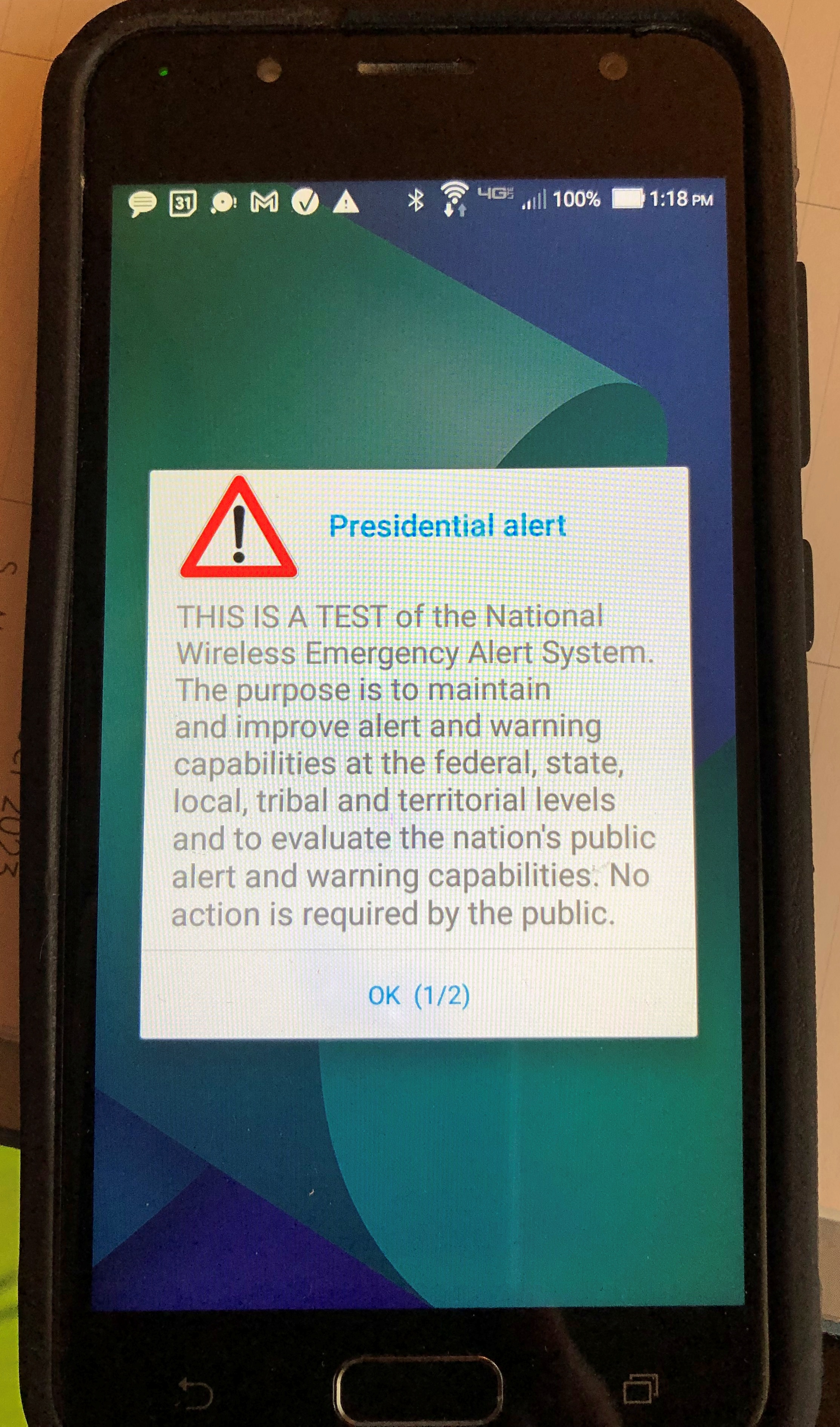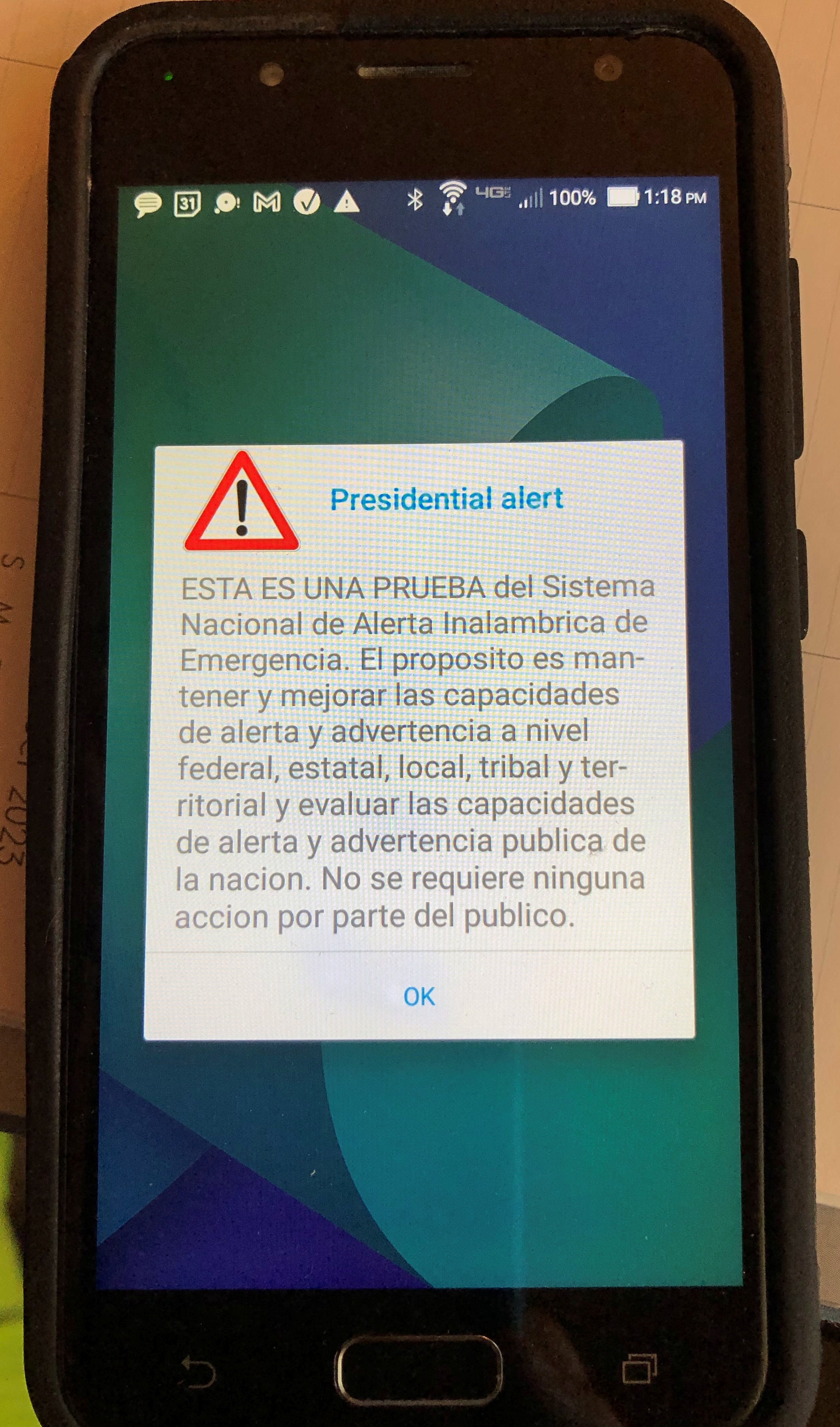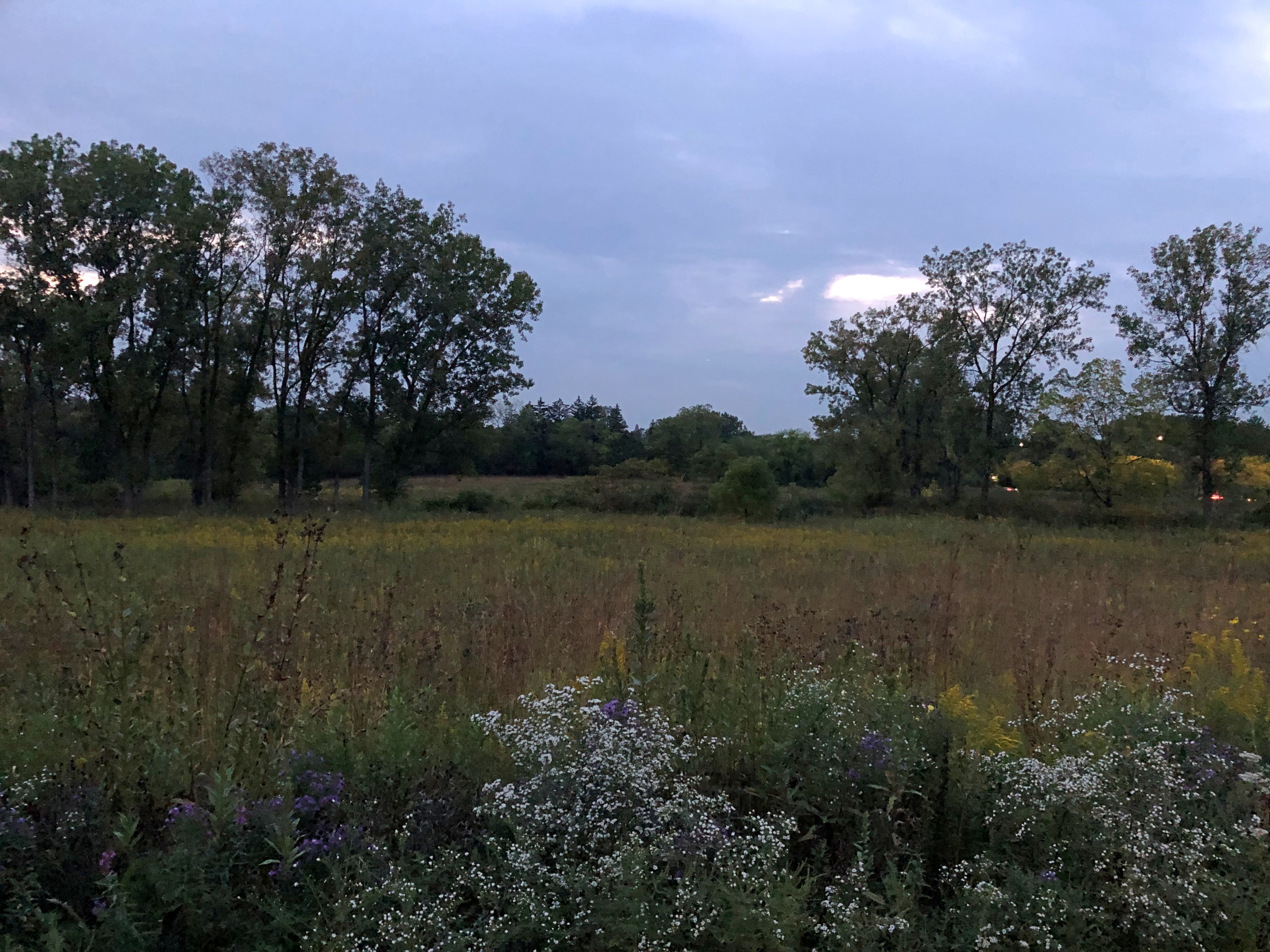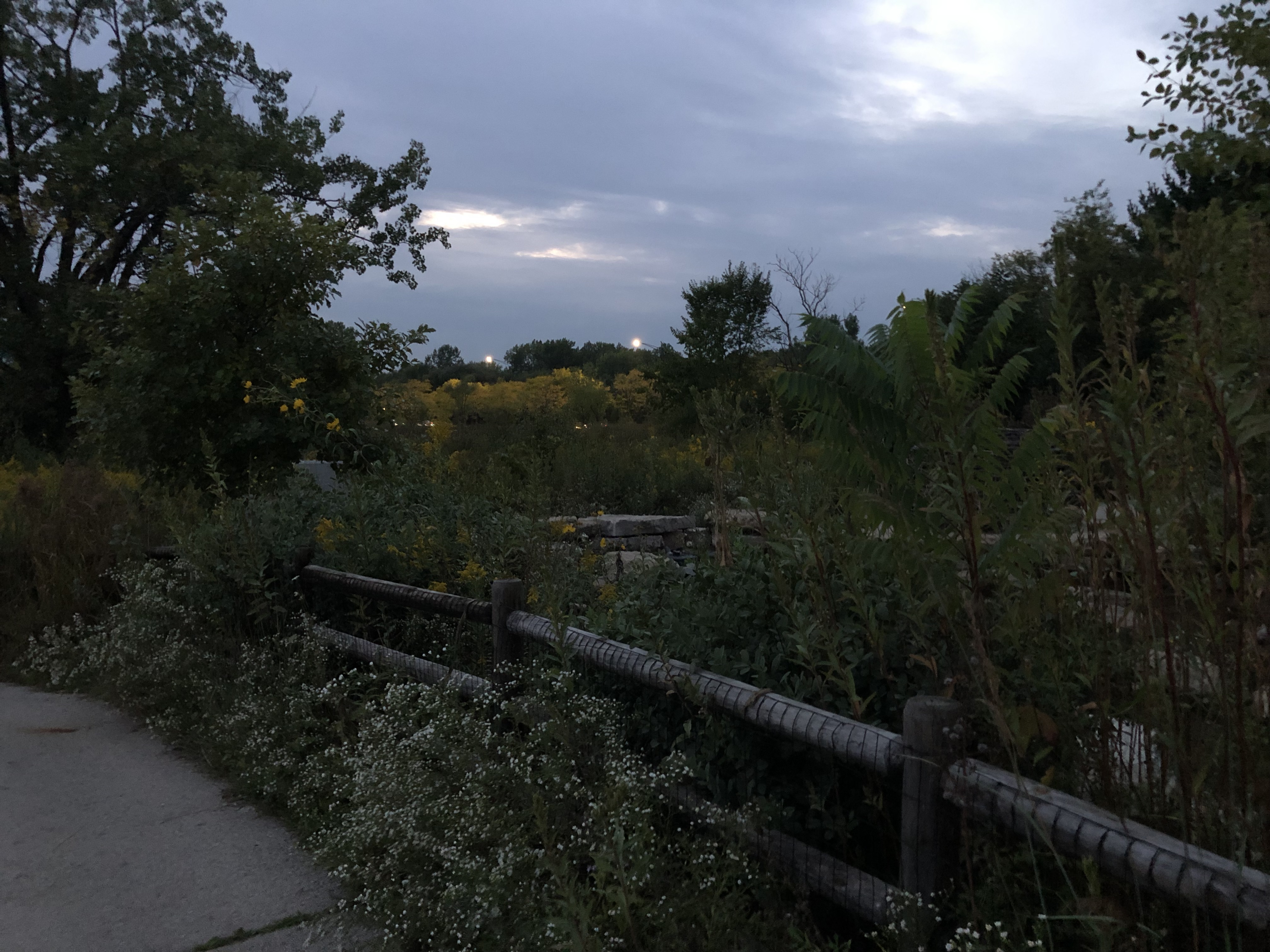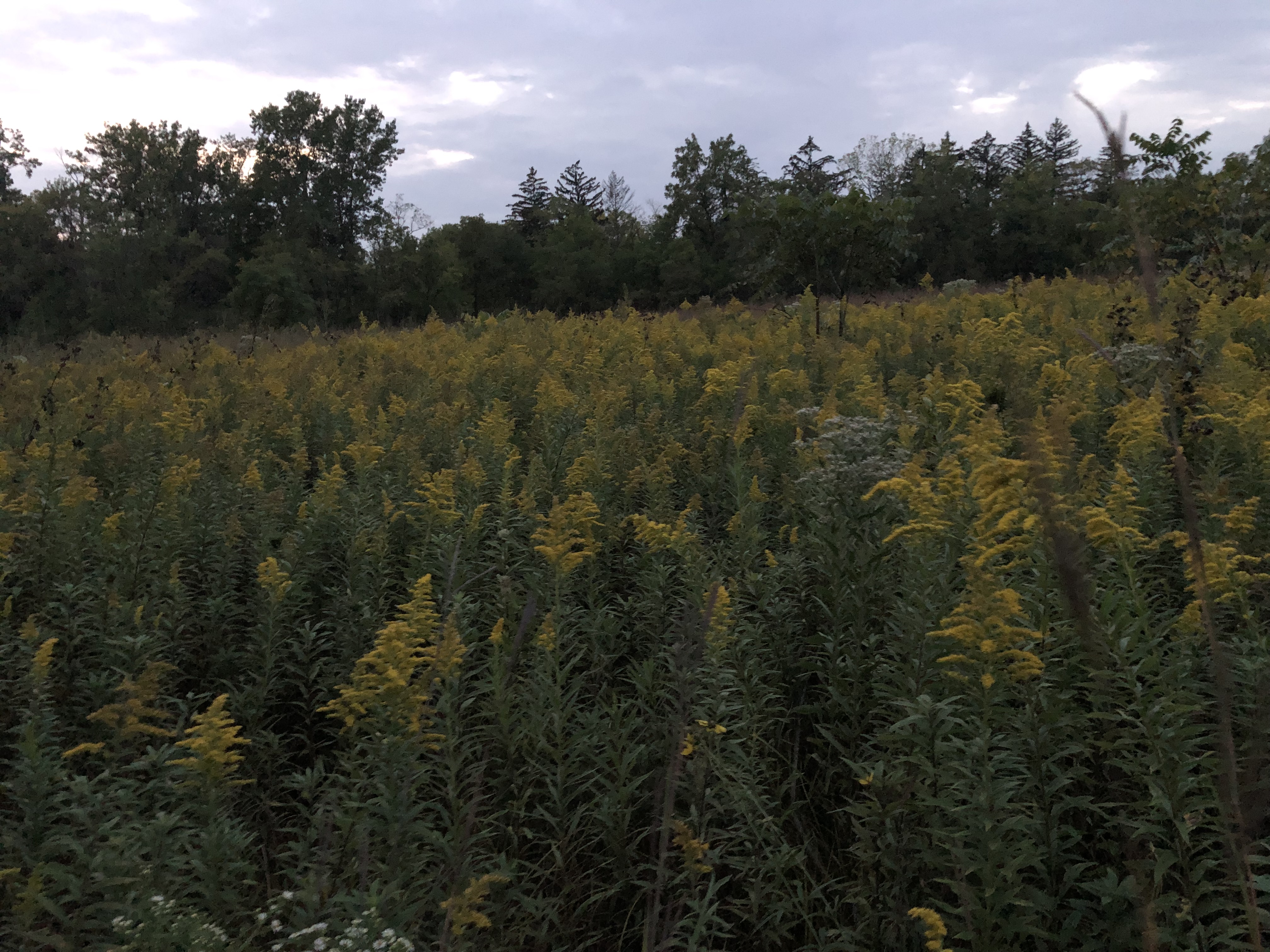Above freezing temps on Friday encouraged us to pay a visit to the Aurora Christkindlmaket, my second such market this year, which is vastly more than most years’ total of zero.
Lights. Artisans. Dark-wood booths evoking Germany. Walking around food. Hot drinks. High prices. Pretty much everything you’d see and experience at the market at Daley Plaza, except you’re in RiverEdge Park along the Fox River.
Adjacent to Hollywood Casino on the Fox is an enormous complex of parking lots, from which a pedestrian bridge crosses the river, opened only a little more than two years ago. A walk across takes you to RiverEdge.

Ornaments of the giants mark the way to the market.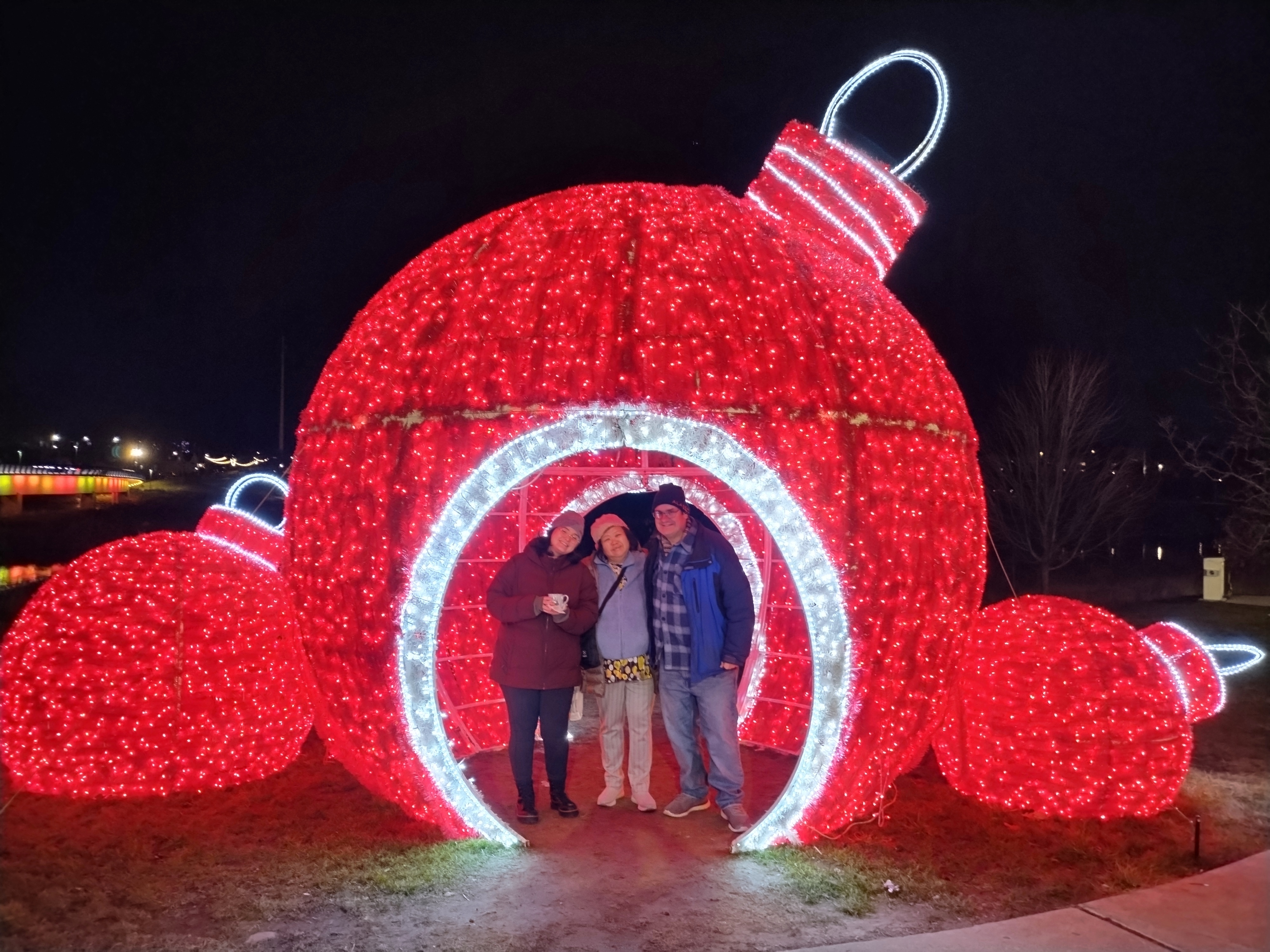
Merchants.


Merchandise.


Swedish joy juice to help get through those near-Arctic Circle wintertime blues?
Called glögg, but the fine print says non-alcoholic, so I’m not sure that counts. The glögg I got at Ikea some years ago had some kick to it. I didn’t check these bottles too closely, so I’m not even sure it’s Swedish, though a Chicago-area company called Lars Own offers imported goods from Scandinavia – yet its web site is a little vague on its Grandpa Lundquist brand glögg.
Wasn’t Grandpa Lundquist a supporting character on Phyllis? The hard-of-hearing hoot-and-a-half curmudgeon played by a wizened character actor whose career was pretty much simultaneous with talkies? No, I made that up, AI-style.
I didn’t buy any 0.0 glögg anyway. I did buy some praline-filled Ritter Sport, a variety I hadn’t sampled before. It’s good. Of course it is. Yuriko acquired a few ornaments – a few per year, that’s how a mass of Christmas decorations grows. We ate pretzels from a Milwaukee-based bakery, and Ann got hot chocolate in a 0.2-liter mug with scenes of the downtown Christkindlmarket painted on it. Designed in Germany, Made in China, it says.
The similarities between the downtown and Aurora markets are no accident. It’s a seasonally oriented cottage industry.
“The Christkindlmarket Chicago was first conceptualized in 1995 when the German American Chamber of Commerce of the Midwest Inc. (GACC Midwest) was seeking alternative ways to promote bilateral trade between the USA and Germany,” the event web site explains. “Companies from Germany and the Chicago area [participated] in the first Christkindlmarket Chicago in 1996. The market was an instant success and continues to flourish through the work of GACC Midwest’s subsidiary, German American Events LLC.”
Not everything – in fact not a lot of it – is German, or even European. You might call it an international market with North European holiday trappings. It works.
In summer, RiverEdge Park is the setting for concerts and plays. The John C. Dunham Pavilion was familiar, though the last time I was there, temps were high and the entertainment was free Shakespeare.
The stage control tower, decked out for this time of the year.
Heard as we were leaving, passing by two people entering:
“So that’s what it’s called? All this time I thought it was the Kris Kringle Market.” (laughs)




















